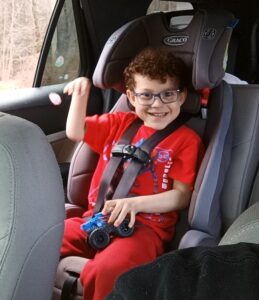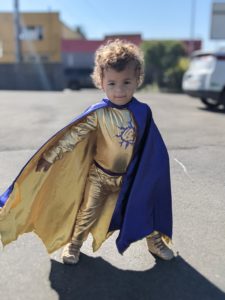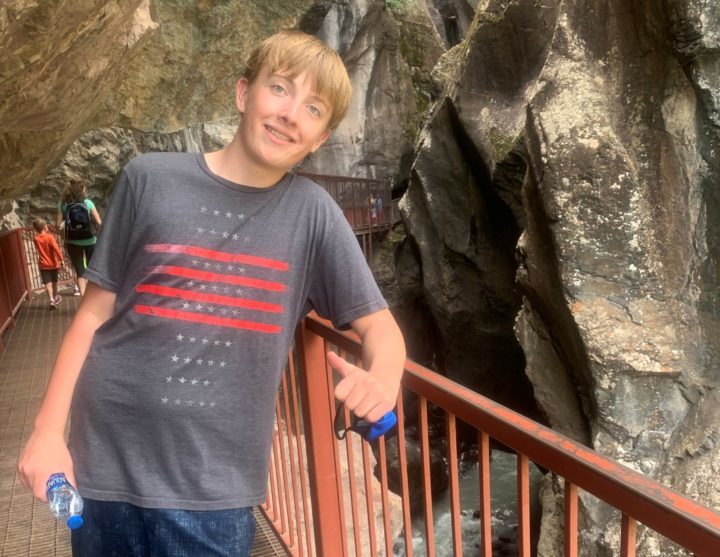Meet Claudia — Stroke at age 8
On July 31, 2017, at 3:44 P.M. I got a phone call from our babysitter. “Jill, something is not right with Claudia. She came into the kitchen crying with a severe headache, and it seems like her speech is slurred. And she can’t lift her right arm”.
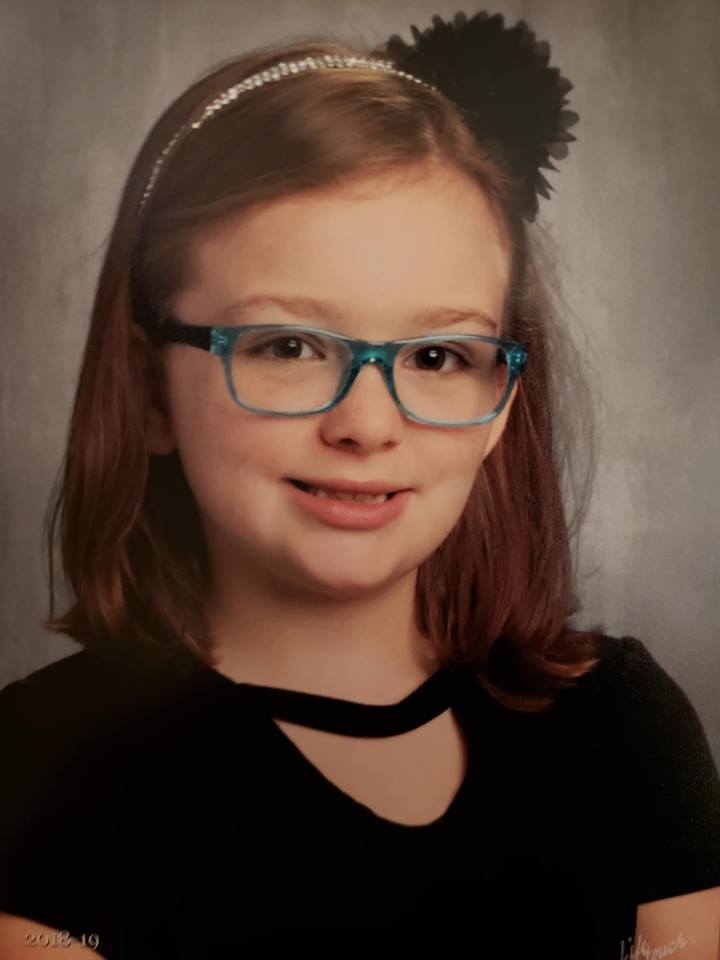
I didn’t know what to do. I literally ran out of work to my car, and within seconds, my husband was at our babysitters’ house to pick up the kids. He had NO IDEA what was going on. “Matt – I need you to tell me – is she okay”? He said “No”. I told him to take her to Cincinnati Children’s and I would meet him there. I called the pediatricians office to make sure I wasn’t over-reacting. I wasn’t. They told me to call 911. I called my husband back and told him to call 911 and meet them at our house instead. I was rushing to get home as fast as I could. I managed to make it home in time to ride the ambulance with her. I knew she would look to me to know how to react, so I did my best to look as calm as possible, even though I was screaming on the inside “WHAT IS WRONG WITH MY BABY?!?!?!”. I stepped onto the ambulance, and there she was. She was terrified. Tears streaming down her face, and she said “Mom, I’m scared”. That’s when I really knew something terrible had happened. The whole right side of her face was dropped down. Her speech was really slurred. I looked at the EMT and asked him what was happening, and he said, “I believe she’s having a stroke”. I was dumbfounded. “She’s 8 years old? How can she be having a stroke?”. “It’s rare, but it happens. As long as you have blood pumping through your body, you can have a stroke”. He went ahead and put an IV port in so the hospital would have immediate access if needed.
We got to Cincinnati Children’s Hospital, were taken right into trauma (which is super scary, but EXACTLY where she needed to be). They whisked her away to get a CT scan and an MRI and another CT scan. The CT scan and the MRI were showing conflicting information regarding her carotid artery. The CT scan was showing a possible dissection, but the MRI did not. Could be an artifact, could be dissection – but we needed to know which one. One thing we did know at this point – Claudia had suffered a stroke. On the positive side, her symptoms were improving. The droop was still there, the slur was still there, the weakness was still there – but it was better. She was put on a heparin drip (blood thinner), and we were sent to PICU. In trying to answer the question of “What caused this to happen”, it was decided to do a spinal tap, which they did that night. It was clear. Nothing was wrong there. The neurologist put in the order for Claudia to have neuro checks done every hour, 24 hours a day.
The next morning the neurologist came in to talk to us and said she was recommending a cerebral angiogram. We still needed to answer the question of what caused this to happen, and what do we need to do to prevent it from happening again? The angiogram would be done the next day, and in the meantime, they would stick to the hourly neuro checks and the heparin.
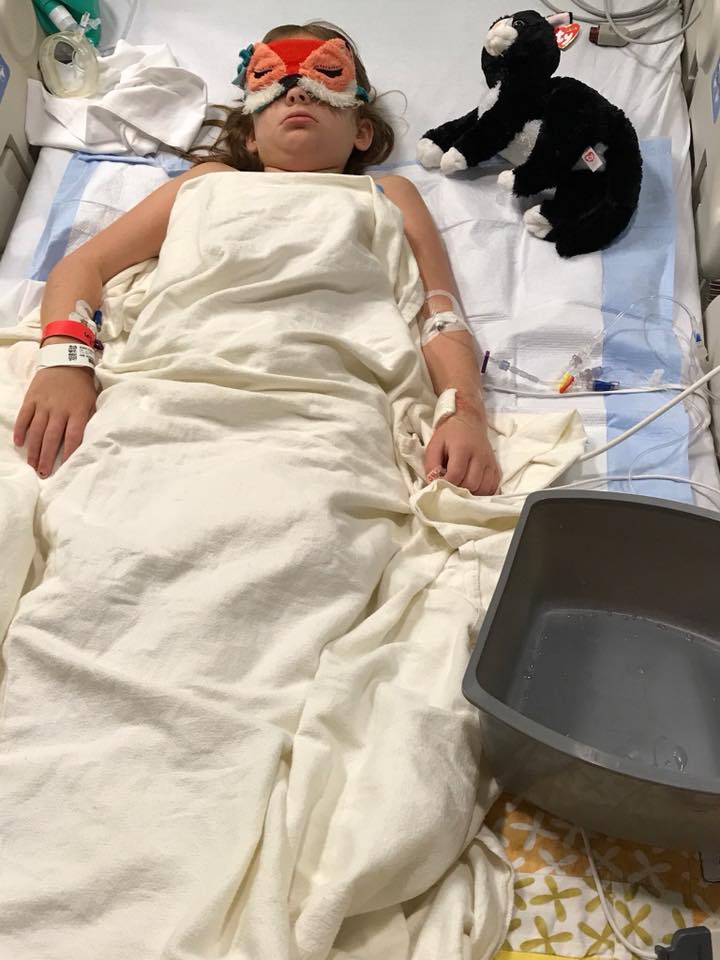
That evening, I noticed Claudia’s mouth was drooping more than it had been. Not as bad as the day before, but worse than earlier. The neurologist came in and said she was probably just tired, and everything else looked normal, but just to be safe, they put her on a no food order, and we would proceed with the angiogram the next morning. The neurosurgeon came in that night to meet with us and review the procedure, which was TERRIFYING, but necessary. He told us that when it comes to stroke, the two big questions are “What caused this to happen” and “What do we need to do to prevent it from happening again”. He promised us he would treat Claudia as if she were his own, and we consented to the procedure.
The next morning, we were right on schedule, and Claudia went into the operating room. It was an agonizing 3 hours. The neurosurgeon came out to let us know that Claudia was out, and they were taking her back in for another CT scan. Although the carotid artery was clean, and there was no dissection, they had concern about her possibly having a 2nd stroke. The blood flow to the left side of her brain was not as strong as he wanted it to be unless he increased her blood pressure. We would be able to see her soon, but she needed to lay flat for the next 6 hours. Once she was back in her room, they let us know they would need to do a PIC line to administer the blood pressure medicine (thank God they were able to get the PIC team quickly, or she would have gotten a central line, which we did NOT want to put her through). While the PIC line was being inserted, the neurologist reviewed the latest CT scan with us, and she realized while we were looking at the images with her, that Claudia did not have a 2nd stroke while she was there, it was there on the 31st, but it was small, and they didn’t see it. Instead, it was an extension of the stroke. This was good news – if she would have had another stroke while on heparin, we would have another issue to worry about.
Onto the plan of attack. The neurologist and her team had discovered a study – a small study, but a study nonetheless – of pediatric strokes that had come out of Switzerland in May – just a little over 3 months prior. The study showed positive results when using steroids to treat this type of stroke. I asked the neurologist what her feelings were about the study, and she said she wished it was bigger a study, but she felt good about the results that came from it. So, we decided to go for it. Steroids were started that afternoon, and would go for 5 days, and then we would move to an oral steroid. Claudia woke up, and wasn’t allowed to move yet, but she was talking, and felt good. A little out of it, but good, considering. Then when she was allowed to sit up, she asked me if we could play a game. She beat me in Sorry. Twice.
The next day (Thursday), she was doing great. Neuro checks looked good, blood pressure was where they wanted it – it was elevated, but that’s where they wanted it. It was decided to try and take her off the blood pressure medicine and see what happened. Almost immediately, her neuro checks weren’t as good. She was put back on, and we would try again. She had to stay in PICU until she was no longer getting heparin and BP medicine intravenously. Friday, we tried again with the BP medicine. She did better. The neuro checks weren’t affected like they had been the day before. It was decided we would try oral BP medicine. Next, we had to try to move off the Heparin drip and move to a blood thinner injection instead (Lovenox). She tolerated that well also. If this continued, we could move to the main neurology floor the next day.
Saturday, we moved out of PICU and to the main floor! It was so exciting. The neurology floor doctors and residents came in and met with us while we were waiting for our room, and they talked to Claudia like she was a rock star. She was the talk of the neurology group that week, and they were excited to meet her. They hadn’t treated anyone with this combination of medicine before, and they were pumped about her progress. This study that they discovered was working.
Each day, Claudia got better and better. My husband and I were trained on how to administer Lovenox injections, because those would continue at home for a while. On Tuesday, August 8th, Claudia was released from the hospital. Just 8 days after she had a stroke. We were sent home with Lovenox, syringes, steroids, BP medicine and Zantac to help with nausea. She continued on the BP medicine and steroids for a few weeks, and she even got to start 3rd grade ON TIME. Her out patient neurologist came in to meet with us before she was released, and we agreed to be a part of the International Pediatric Stroke Study – how could we say no??? If it weren’t for those families in Switzerland who had agreed to their children being a part of a study, our daughter might not be where she is today.
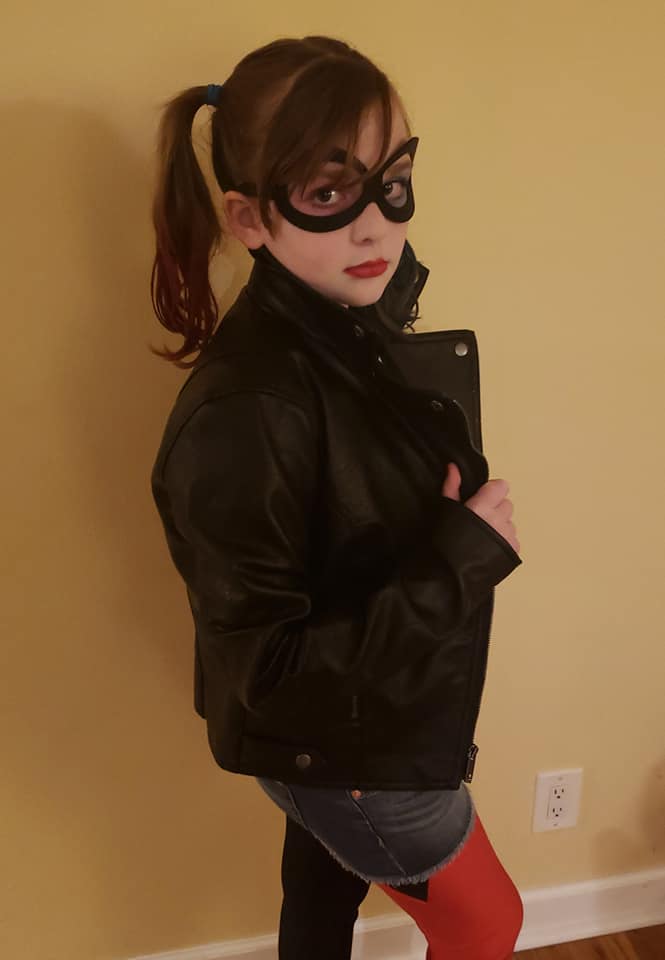
Claudia had follow up MRI imaging done at the 3 months, 6 months and 1-year mark. She continued with Lovenox injections twice a day for almost 7 months. Now, she takes a baby aspirin every day. At this point, that will continue until our next follow up in August of 2019. She had some minor effects of the stroke – her handwriting is different, she has very slight weakness in her right arm, but nothing that causes her any issues. In the first few months, she really struggled with reading – not that she couldn’t read, but she was having a hard time retaining what she read. She was an avid reader prior to the stroke, so this was a big deal. She didn’t want to read at all. So, we started working with her, reading to her again like we did when she was little, and slowly but surely, she started reading on her own again. Now, she is reading Harry Potter books like crazy, and is in the top reading group for her grade (except for the small number of kids who are in the super advanced reading group). She has straight A’s in school, and is a regular, normal 10-year-old girl again.
We are forever grateful to our baby sitter for knowing something was wrong, the EMT who recognized she may be having a stroke, the trauma team at Cincinnati Children’s Hospital for knowing exactly what to do, her neurologist, who would not stop until she had answers, and her team of residents who researched to find the study that would treat our daughter, the neurosurgeon who treated our daughter like she was his own, her outpatient neurologist who came into the room and sat down with Claudia and made her feel like the most important, special person in the world, and the families in Switzerland who allowed their children to participate in the study that saved our daughter. To those families, I want to say THANK YOU.
Strokes can happen at any age. That is something the world needs to know.
Thank you for reading.
Jill, Matt and Claudia Veach
